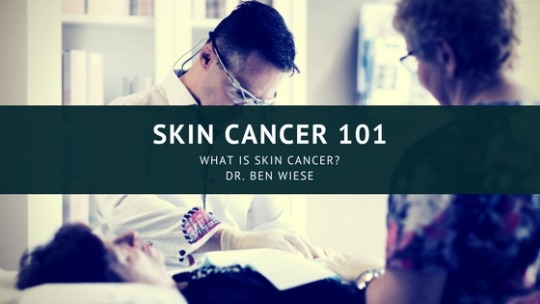Link
As we enter the Fall season, Canadians should take some extra time to examine how their skin may have been affected from their summer in the sun. To be more specific, they should be completing a thorough self-examination of their moles, as changes can signify that what you thought was a mole actually could be a melanoma. Melanoma skin cancer is the most dangerous form of skin cancer and is the type of cancer, that can look like a regular mole. Knowing this, I explored melanoma skin cancer in greater detail, and why it is so important to aware of any changes in one’s moles.
2 notes
·
View notes
Link
While it may be difficult to think about right now with the continued, frigid winter weather, the warmer months are not too far away. For countless people around the world, that typically means that they will be spending more time in the sun. What many people do not take into account though, is the effect that the sun has on your skin each time you are exposed to its UV rays. From working on your tan to getting a sunburn, each time in the sun affects the integrity of your skin. Knowing this, let’s examine some of the things that happen to your skin when exposed to the sun.
0 notes
Link
The skin is the largest organ of the body. Besides regulating the body temperature, it protects the body against heat, light, injury, and infection. However, continuous exposure to the sun can be dangerous for your skin and may result in skin cancer — abnormal growth of skin cells. Today, skin cancer has become the most common form of cancer. In fact, one in every five Americans develop skin cancer in their lifespan. Though, skin cancer can develop in any part of the body, it mostly occurs in skin that remains exposed to sunlight, such as the face, hands, and neck. Fortunately, it is preventable, as well as curable.
0 notes
Text
Skin Cancer 101: What Is Skin Cancer?

As we prepare for the summer months, it is becoming more important to not only understand what skin cancer is, but what factors can increase one’s risk of developing skin cancer in their lifetime.
Types of Skin Cancer
Skin cancer develops when abnormal skin cells begin to multiply at a rapid rate. It is the most common form of all cancers. There are several different types of skin cancer. The most common types are basal cell carcinoma, squamous cell carcinoma, and melanoma skin cancer.
Basal cell carcinoma and squamous cell carcinoma are the two most common types of skin cancer. Like other forms of cancer, basal cell carcinoma and squamous cell carcinoma develop when abnormal cells begin to grow out of control. Both are slow growing types of cancer, and are typically found within the head, neck, and arm region of the body. When detected early both these cancers have a good prognosis. Squamous cell carcinoma has an increased risk of local spreading, where basal cell carcinoma, has a decreased spreading risk.
Melanoma skin cancer is a less common, but more more dangerous form of skin cancer that affects approximately 7,000 people in Canada each year. Unlike basal cell carcinoma and squamous cell carcinoma, melanoma skin cancer has the highest of risk of spreading to other organs in the body, and can quickly become fatal if left untreated. While melanoma skin cancer can appear anywhere on the body, it most commonly appears on the chest and back region in men, and on the legs in women, but can develop in other areas like the soles of the feet, nails, genitalia and even the eye. Interestingly, the legend, Bob Marley, died at age 36, from a type of melanoma under his toe nail.
Risk Factors
There are several factors that can increase a person’s risk of developing skin cancer in their lifetime that individuals should know about. Those who are repeatedly exposed to the sun or have fair skin that burns easily are at an increased risk. In addition, individuals who have had repeated exposure to ultraviolet rays from sunshine and tanning beds, or have scarring from previous diseases, are also at a higher risk of developing skin cancer in their lifetime. Did you know that your first exposure to a sunbed, before the age of 35, increases your risk of melanoma to 75%! No wonder the World Health Organisation designated tanning beds as ‘carcinogenic to humans’, in the the same category as tobacco, arsenic and asbestos, in 2009.
There are precautions that individuals can take to reduce the risk of developing skin cancer in the future. The most common precautions include consistent protection of the skin against light, 365 days of the year, irrespective of the weather conditions.The use of sunscreen and wearing protective clothing every day, avoiding excessive sun exposure during the peak hours between 9:00 AM and 3:00 PM, and avoiding the use of tanning beds. While skin cancer continues to be prevalent in Canada, understanding the risk factors and taking the correct precautions can reduce the risk of developing skin cancer.
Be sure to check back soon for more articles on skin cancer risk factors, treatments, and tips to lowering your risk!
2 notes
·
View notes